Temperature and the Garden
From 2019 up till March of 2023 the presence of a La Nina caused abnormal weather for Shilofarm. NOAA Climate Prediction Center is projecting La Nina will dissipate in March 2023, which is somewhat indicated by the shift back to California of the winter Pineapple Express pattern.
Here is the temperature highs and lows for January 2023 compared with January 2022:

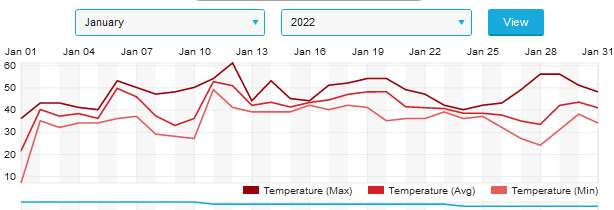
Notice that the low temperatures have been consistently higher over the same period, as well as the high temperatures doing well. This pattern is consistent with the southerly flow of warm air that happens here in January, but warmer that usual. That matches the CPC forecast.
June
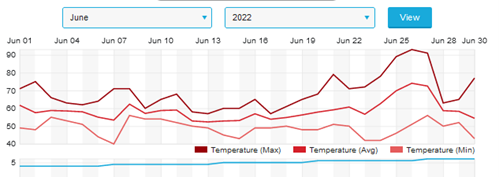
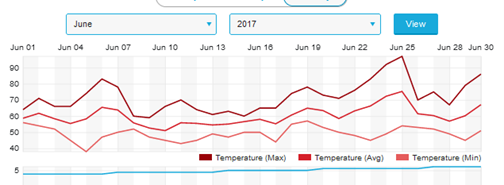
June is a critical lead-up month to the main season. It is very common for June to be cool and wet. True warm season crops are going to kick in at the middle to end of the month. That ‘hump’ that happens around the 25th is always a precursor to more sustained warmth.
Note that 2022 lacked the above 70F days at the start of the month, which was a problem. There were some days towards the end of the month that came close to being below 40F here at Shilofarm.
February

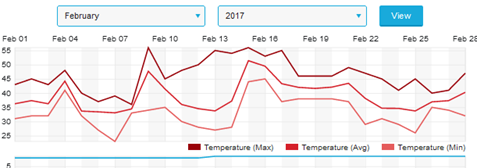
February 2022 was nasty cold. Arguably, the sub-20F temps were a disaster for many of the tree fruits. Comparing 2022 with 2017 the short low temp excursions were much less of a problem for tree fruits and crops in the greenhouse. In 2022, the entire set of fruiting plants in the propagation benches were frozen there at the end of the month.
May
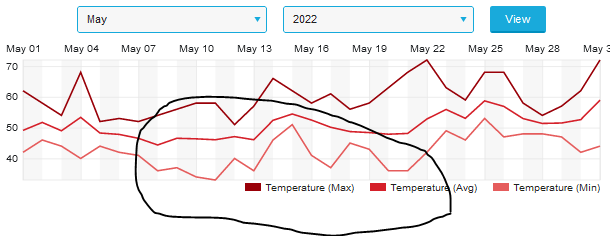

In 2022, the sustain low temperatures included a very late frost at the Shilofarm location – May 10, to be exact. That set back most everything, and caused plant starts to be stunted and root bound in their starting trays. The frost was a light transient, and it can be speculated that covering the new starts would have been effective. However, the sustained low temperatures were problematic for early growth.
Note May 4, 2017, is an anomaly – it sure was not a low temp of zero. The May of 2017 was to all intents a ‘normal’ not La Nina year. The higher low temperatures make a substantial difference in the heating of the soil.
Conclusion
First, the standard of a warmer April and May with a chill in June is reasonable to expect. Second, it does not seem likely that February will have the very bad cold weather that 2022 had, but it will be cooler than January. Third, a ‘last freeze’ is still likely to be near mid-April.
- Any cool season plants set outside prior to mid-April have to be light freeze tolerant in March, and deeper freeze protected in February. A cold frame for the Kale, Cabbage, Broccoli, Cauliflower and lettuces set outside in February is required.
- Flower and warm season crops should be started in a window where they can be set outside April 15. Floating crop covers may or may not be needed but are probably valuable as a safety net or help to growth.
- Any Hay cutting should be factored around what actually transpires in May. How long is it dry, how warm is the air, how cold and wet is the ground – all the usual mysteries.
- CPC should be checked at the end of January for a four-week forecast.
Let’s do this.
